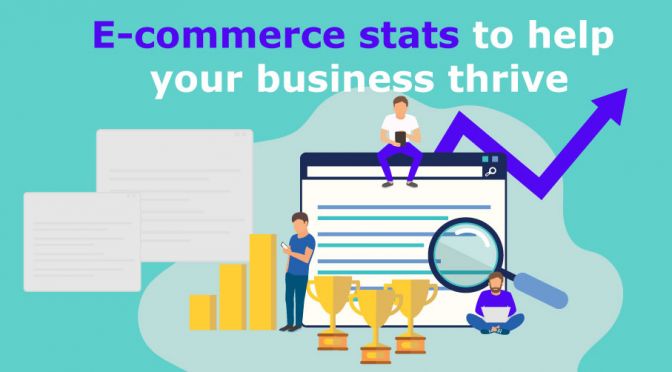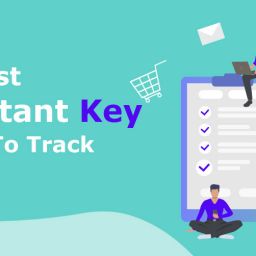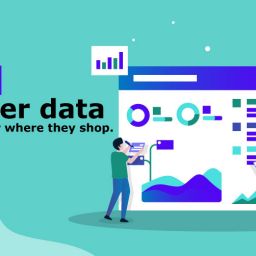Ecommerce stats are indispensable in today’s ecommerce business. The world is becoming more and more online. And according to data, which I will share with you, ecommerce business is going to overtake brick-and-mortar soon. The line between eCommerce and brick-and-mortar stores is increasingly being erased. Physical shops without an online presence and eCommerce purchase options are killed off by competitors at an increasingly worrying pace.
Any company is an ecommerce company; otherwise it either doesn’t exist or won’t be around for long.
Here are 12 of the 22 Most Important Ecommerce Stats To Help You
#1. Over 4 billion people (53% of the global population) are connected to the internet, and nearly all of them (92.6%) go online using their mobile devices.
As of 2018, the average daily social media usage of internet users worldwide amounted to 136 minutes per day, up from 135 minutes in the previous year.
In 2019, the report shows that consumers are online an average of 6 hours and 42 minutes each day whereas mobile devices remain to be a popular mode for connecting to the digital world.
The numbers above equate to more than 100 days of online time for an average internet user. That is more than 27 percent each year.
According to the Digital 2019 report, the 6h 42m internet time is the world’s average while the USA to fall slightly below 6h 31m.
#2. Most (42%) of online shoppers prefer to pay with their credit cards. 39% of online buyers prefer to pay for online goods and services via PayPal.
PayPal accounts connect directly to a bank account, buyers can pay for online purchases even if they do not own a credit card. Using PayPal increases financial security for buyers since the seller does not receive bank account or credit card numbers, only the PayPal account number. The fact that PayPal is free and available in almost all location in the globe, is also appealing to many buyers.
Buyers can pay for merchandise immediately, sellers receive payments immediately without having to wait for checks to go through the mail or clear the bank. Individual sellers can accept credit card payments without having to pay the fees credit card processors charge, and merchants may find PayPal’s fees lower than other processors. PayPal offers a seller protection policy as well that may cover losses for products lost or damaged in shipment or from a chargeback.
#3. In 2019, retail e-commerce sales worldwide amounted to 3.53 trillion US dollars and e-retail revenues are projected to grow to 6.54 trillion US dollars in 2022, up 14.1%
We cannot deny that last year 2019, the top global ecommerce market was China, with $1.935 trillion in ecommerce sales—more than three times greater than the US at No. 2 with $586.92 billion. It’s hard to fathom, but China only recently surpassed the US in ecommerce sales in 2013 for the first time. Since then, it has quickly widened the margin. On its own, China represents 54.7% of the global ecommerce market, a share nearly twice that of the next five countries combined. As China goes, so goes the global ecommerce market.
Today, ecommerce stats influences up to 56% of in-store purchases.
#4. By 2019, B2B firms will spend more on eCommerce technology such as analytics than online retailers.
As technology continue to evolve rapidly and shopping trends shift on a daily basis, ecommerce is in a constant state of adaptation that can leave brands fumbling in the dark. To keep up, ecommerce businesses must anticipate changes in the market using reliable data insights. In short, they need effective ecommerce analytics.
Ecommerce analytics simply refers to any tool or strategy designed to analyse large amounts of data in order to produce actionable insights. Because it exists in an almost entirely virtual space, ecommerce generates complex, comprehensive datasets — particularly those related to client buying behaviour.
#5. By 2021, 53.9% of all US retail eCommerce is expected to be generated through mobile commerce from Statista
More and more users are accessing the web from a tablet or smartphone than a desktop, they are doing so with more eCommerce intent than ever before. During last year’s busy holiday shopping season, a third of all online purchases came from smartphone users. Not even Black Friday (6.2 billion in online revenue in 2018) was immune to mobile fever, as nearly 40% of sales on the traditionally brick and mortar shopping day came via a mobile device. On Cyber Monday ($9.2 billion in online revenue in 2019) 54% of visitors came from mobile devices, while around 33% purchases on their mobile device, up over 40% from the year before.
#6. More than 1B consumers with mobile phones used them for banking purposes.
Consumers are now becoming more and more comfortable using mobile phones for banking purposes. The survey said more than half of mobile banking users had used their mobile phones to deposit checks, compared to 38 percent in 2013.
And while the survey found that around 14 percent of consumers are still part of what it calls the underbanked, meaning people with limited access to financial institutions, over two-thirds of this group has access to a mobile phone.
Mobile phones are also changing the way many consumers now make their payments.
#7. Mobile payments will have passed the 50% milestone, becoming mainstream in most markets by 2026.
Mobile payments stats is a good Ecommerce stats to think about as it has been quickly evolving, with more recognizable brands stepping into the industry to advance technology and offer what consumers and businesses want in terms of apps and services that allow them to pay with their phones.
For example, Google’s recently announced Hands Free. It’s a new mobile payment app that uses either Bluetooth or Wi-Fi, like most other payment apps — except that this app allows you to keep your phone in your wallet or purse. Google is also tinkering with facial recognition to confirm an individual’s identity.
More tech companies will continue to roll out their mobile payment platforms.
#8. Millennials now make 40.0% of all purchases using mobile devices.
Millennials in 2019 make 60% of their purchases online, the survey of 1,002 millennials (consumers ages 22 to 37) found. That’s up from 47.0% in a survey CouponFollow conducted in 2017. Millennials now make 40.0% of all purchases in stores, down from 53.0% in 2017.
The 2019 Ecommerce stats also found massive growth in mobile shopping among U.S. millennials. Consumers in that age group now make 36.0% of their total purchases using mobile devices, up 20 percentage points from 16.0% in 2017. Purchases made on a desktop or laptop computer make up 24.0% of total purchases, down from 31.0% in 2017.
#9. Eight out of 10 mobile users look for local businesses online.
8 out of 10 respondents said a search engine was their top choice among a collection of digital and nondigital sources to look up information for local businesses last year.
The survey also found search engines lead other sources when it comes to consumer trust and accuracy. In fact, the percentage of US internet users who agreed with this sentiment increased dramatically from 2015 to 2016.
Search engines only fell short when respondents were asked about their favored source when ready to make a purchase. At this point in the purchase journey, 27% cited company websites vs. 24% for search engines.
#10. The total, global M2M connections will rise to 1billion
Another Ecommerce stats to keep an eye on is the total number of global cellular M2M connections will reach 1.3 billion by 2022. With emerging cellular networks – including LTE-M and 5G – growing to account for an estimated 10% of all cellular M2M connections.
#11. 2.62 billion internet users access social media at least once a month.
Social media statistics is another Ecommerce stats that is key ingredient in any social media marketing strategy. The ability to not only direct shoppers toward a new product or an attractive deal, but to engage with them and create a sense of community, is incredibly useful. A complete social media eCommerce presence also includes direct sales through some networks. It’s also important to have the back-end tools in place to let customers share products and recent purchases with friends and followers through just a single click.
#12. B2B eCommerce market could reach $1.1T and account for 12.1% of all B2B sales by 2020
Manufacturers, wholesalers and distributors used to take most orders in person, by phone or by fax. That’s no longer the case—now those B2B sellers are increasingly going online and generating more new and repeat business through ecommerce.
Last year, in fact, business-to-business ecommerce sales through websites and online marketplaces grew at the fastest rate yet and for the first time surpassed $1 trillion.
Part 2 of this post will be published on thursday February 28, 2020.
These are the following stats:
- 89% of buyers search online in a B2B purchase process.
- 268 million consumers in Europe shop online, and 200 million European consumers buy from abroad electronically.
- 57% is the global average of online shoppers who make purchases from overseas retailers.
- 61% of shoppers report leaving a transaction due to extra costs, such as shipping fees.
- 49% of consumers would rather shop online if they had a money-back guarantee for products not matching what was ordered.
- Consumers indicate that they are purchasing entertainment (61%) and services (56%) categories more often online than in-store.
- The online purchase of restaurant/meal kit delivery amounted to 33% in 2018, 2% higher than in 2017.
- The top online purchasing categories in 2018 were fashion at 61% and travel at 59%.
Resources:
Additional Resouce:
11 Most Important Key Metrics To Track In Your Ecommerce Sales Report
How Data Analytics Enhances Ecommerce Business Performance
In Conclusion:
If there’s one thing all the above data, reports, and trends reveal, it’s that global ecommerce isn’t a choice; it’s a necessity. The future of your company’s growth depends on it. Maybe even its survival. Any company is an ecommerce company; otherwise it either doesn’t exist or won’t be around for long.










